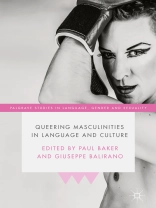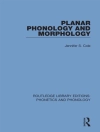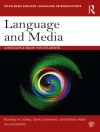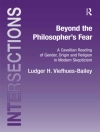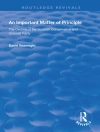How do we learn what it means to be a man? And how do we learn to question what it means to be a man? This collection comprises a set of original interdisciplinary chapters on the linguistic and cultural representations of queer masculinities in a range of new and older media: television, film, online forums, news reporting, advertising and fiction. This innovative work examines new and emerging forms of gender hybridisation in relation to complex socialisation and immigration contexts including the role of EU institutions in ascertaining asylum seekers’ sexual orientation, and the European laws on gender policy. The book employs numerous analytical approaches including critical discourse analysis, corpus linguistics, multimodal analysis, literary criticism and anthropological and social research. The authors show how such texts can disrupt, question or complicate traditional notions of what it means to be a man, queering the idea that men possess fixed identities or desires, instead arguing that masculinity is constantly changing and negotiated through the cultural and political overlapping contexts in which it is regularly produced. These nuanced analyses will bring fresh insights for students and scholars of gender, masculinity and queer studies, linguistics, anthropology and semiotics.
Innehållsförteckning
Chapter 1. Introduction; Giuseppe Balirano and Paul Baker.- Chapter 2. Is the rectum a goldmine? Queer theory, consumer masculinities, and capital pleasures Tommaso M. Milani.- Chapter 3. Masculinity and Gay-Friendly Advertising: A Comparative Analysis between the Italian and U.S Market; Eleonora Federici and Andrea Bernardelli.- Chapter 4. “Come and Get Your Love”: ’Starsky and Hutch’, Disidentification, and U.S. Masculinities in the 1970s; Vincenzo Bavaro.- Chapter 5. The Televisual Representation of Ageing Gay Males: The Case of ’Vicious’; Laura Tommaso.- Chapter 6. The queer peer: masculinity and brotherhood in Cain and Abel literature and imagination; Paola Di Gennaro.- Chapter 7. An Effortless Voice: Queer Vocality and Transgender Identity in Kim Fu’s ’For Today I Am a Boy’; Serena Guarracino.- Chapter 8. Painting social change on a body canvas: trans bodies and their social impact; Emilia Di Martino.- Chapter 9. Neapolitan social-transgenderism: the discourse of Valentina OK; Annalisa Di Nuzzo.- Chapter 10. Undoing Black Masculinity: Isaac Julien’s Alternative Grammar of Visual Representation; Emilio Amideo.- Chapter 11. “You cry gay, you’re in”: The Case of Asylum Seekers in the UK; Maria Christina Nisco.- Chapter 12. The object of subordination is immaterial – discursive constructions of masculinity in a far-right online forum; Andrew Brindle.
Om författaren
Paul Baker is Professor of English Language at Lancaster University, UK. His books include
Using Corpora to Analyse Gender (2014),
Sexed Texts: Language, Gender and Sexuality (2008),
Using Corpora in Discourse Analysis (2006),
Public Discourses of Gay Men (2005) and
Polari: The Lost Language of Gay Men (2002).
Giuseppe Balirano is Associate Professor in English Linguistics and Translation at the University of Naples “L’Orientale”, Italy. His publications include:
Humosexually Speaking: Laughter and the Intersections of Gender (2016, co-edited with Delia Chiaro);
Languaging Diversity (with Nisco M.C., 2015); and
Masculinity and Representation (2014).
